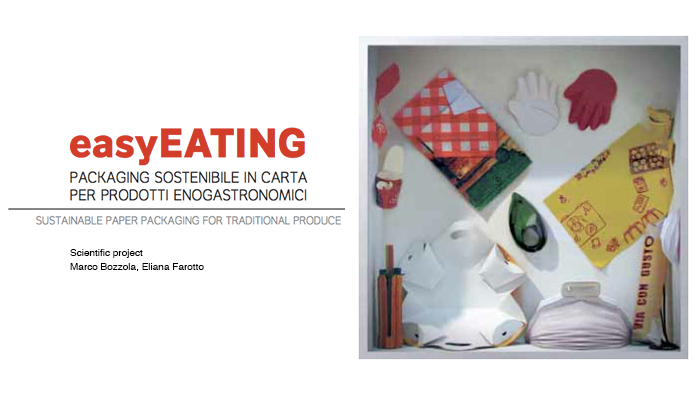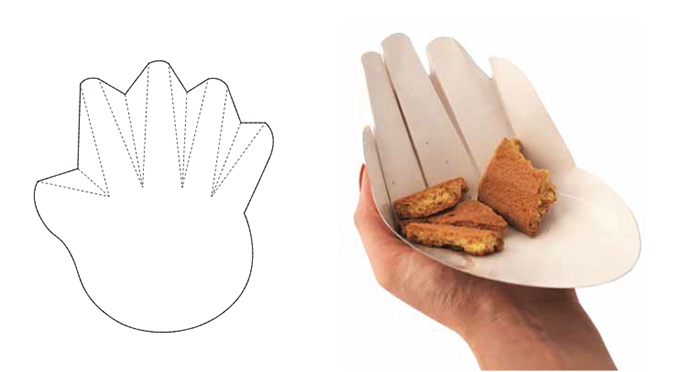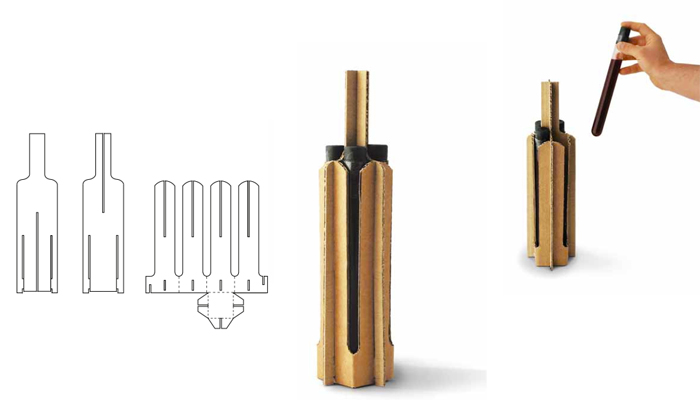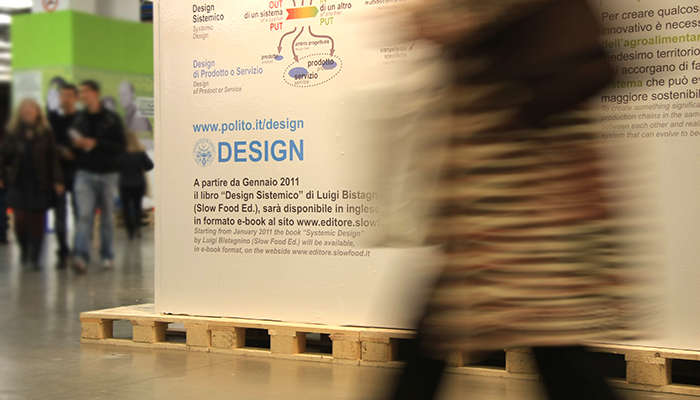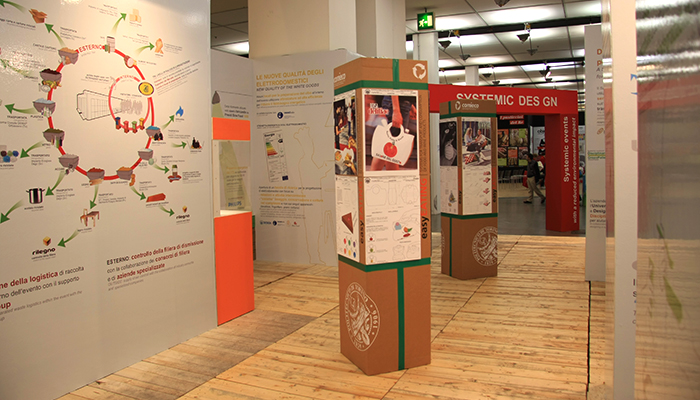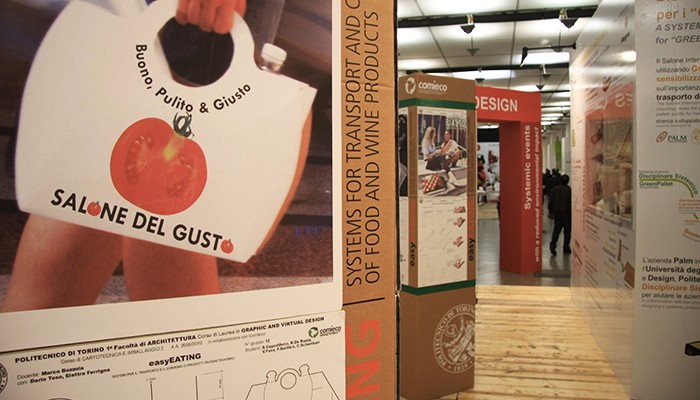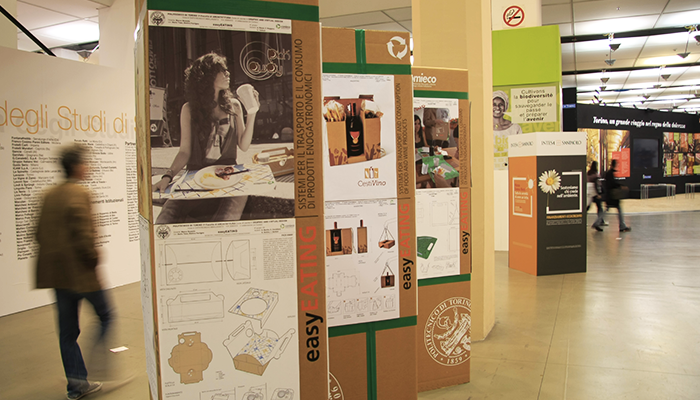2010 | Politecnico di Torino – Comieco
easyEATING is an academic project developed during the design laboratory on ‘Paper Transformation and Packaging 2’, relative to the Degree Course in Graphic and Virtual Design of the Politecnico di Torino, in collaboration with Comieco, National Consortium for the Recovery and Recycling of Cellulose-based Packaging and Slow Food.
My role as a teaching assistant was to support the students during the whole design process.
The aim of the course was to develop sustainable design concepts for transporting, selling and consuming food and wine products, using cellulose based materials, and designed especially for the usage within the Salone Internazionale del Gusto in Turin.
Handeat | R. Campagnaro, A. Capasso Barbato, I. Pivaro, M. Remondino
What is the role of packaging in the enhancement of a typical food product?
What is the contribution of responsible design methods in the issue of food packaging, where functional issues are necessarily accompanied by environmental ones?
The consumption of a typical product inside the Salone del Gusto, in fact, embodies values and connotations that go far beyond simple functional considerations and practices.
Careful consumption, respectful of food, its origins, the land on which it is grown, the people who produced it, through a conscious and forward- looking attitude, contrasts with the idea of disposable, or “fast”, and, more generally, with an entire system that is no longer sustainable.
4 in 1 | M. Cordillet, R. Fissore, A. Saccà, M. Sartor
Based on these considerations, the students were confronted with the characteristics of typical agricultural food exhibited at the Salone del Gusto, which is closely connected with the territory, with the use of local resources, culture and processing techniques established over centuries of history according to values that constitute an irreplaceable asset of knowledge and expertise.
The project then developed following the more consolidated aspects linked to the use and man- agement features for a nomadic and “unstructured” use inside the Fair, but also following the values of a new model of consumption, bearing the ethical and social values that packaging should be able to interpret and transmit. This is packaging that should be able to enhance and emphasise the taste of food, facilitate tasting, but also bring the consumer and the producer closer, to convey knowledge, encourage sustainable attitudes towards the environment and the people that use it.
Packaging, which is often seen as a negative image of the waste emergency, must regain environmental, communication and pedagogical dignity in this context, by fully integrating itself into the natural system, becoming a resource and not a problem. The most important design effort was that of managing to summarise all these values and meanings in a manufactured product, in this case paper, that would keep its containment, transportation, preservation and food protection qualities intact.
Students were then led to consider the qualities of the new packaging system, the real needs to be met and on how to respond, bearing the principles of pre-recycling and dematerialisation in mind. Design, which has always been an interpreter of human needs, in this scenario takes on a value that is even more devoted to the search for answers that can interpret and contribute to overcoming the growing environmental and social issues.
An approach to design that begins with the thorough knowledge of a versatile material that can offer different and sometimes surprising benefits, depending on its shape, weight and type.
EASY EATING the Booklet
> SALONE INTERNAZIONALE DEL GUSTO 2010
The results of the operation were exhibited in the “Low environmental impact events” space during the eighth edition of the Salone Internazionale del Gusto 2010.
CREDITS:
Scientific project: Marco Bozzola, PoliTO DAD
Teaching assistants: Elettra Ferrigno, Dario Toso

